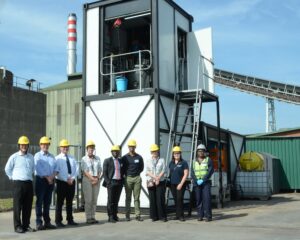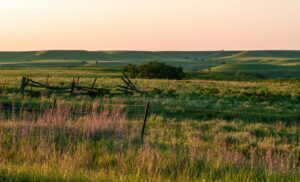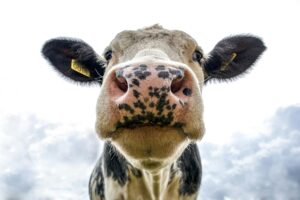South Africa’s strategic water source areas make up 10% of the country’s landcover, supplying 50% of our surface and ground water. Reuben Thifhulufhelwi, Project Manager for the uMhlathuze Catchment at WWF South Africa, says that these numbers can be difficult to comprehend given that South Africa is considered a water-scarce country facing a growing water supply deficit.
“With annual rainfall in the country standing at half the global average, the water requirement in many water management areas already exceeds availability. Add to this the predicted El Niño weather phenomenon, and the red flags begin to wave ferociously.”
World Rivers Day, which was celebrated on 24 September, is an annual commemorative day to raise awareness about the importance of healthy rivers and their surrounding catchments – and the vital role that rivers play in the health of communities, economies and the environment. In South Africa, there are 22 surface strategic water source areas. These are mountainous areas that produce high rainfall that feed our most significant rivers.
One such catchment that falls within a water source area is the uMhlathuze catchment in KwaZulu-Natal. The uMhlathuze is approximately 180km north of Durban and is an important catchment for economic development of agriculture as well as in areas including Richards Bay and Empangeni.
“The uMhlathuze catchment is small and highly water stressed. Land degradation, large scale cultivation, mining, and industrial development are some of the main drivers for water security challenges facing this area. Here, alien invasive vegetation alone contributes to an approximate annual loss of 2.5% of water,” says Thifhulufhelwi.
“The drought of 2015/16 highlighted the level of water stress in this area, when dam levels in the Goudetrouw Dam dropped to an alarming 16%. This threatened high water use sectors in the catchment such as irrigated agriculture in the middle of the catchment and industrial developments at the bottom of the catchment.”
The water demand is projected to increase over the years and outstrip supply, further exacerbating the looming impact of the El Niño weather phenomenon.
“Climate Change predictions presents additional future risks and challenges to water security challenges – and we need to act now and urgently manage catchments and their river flows in order to be better prepared for future extreme weather events, as well as future demands placed on catchment areas by growing economies. There are a number of important industry and agriculture water users in the lower catchment, and for these stakeholders, the threat of negative impacts on their operations due to water security has become the highest business risk”, Thifhulufhelwi adds.
Mondi South Africa, as one of the biggest corporate businesses (and water users) operating in the uMhlathuze catchment area, has recognised its role in the catchment and has committed to ensuring the sustainability of its business, as well as to protecting the natural environment in the local surroundings in which its operations are situated, including the water resources on which the company is dependent.
“Mondi and WWF South Africa have been working together for over 30 years. In a partnership which began with wetlands conservation, the partnership has over the years evolved to tackle freshwater conservation and stewardship, as a result of the risks brought about by climate change,” says Candice Webb, Head of Environment at Mondi South Africa.
“On a national scale, there are not that many catchments in the country where we have sufficient real time data and information to guide discussion and decision making on water resource management and use. If we don’t know at any one point of time how much water is in a river, who is using it and how much is being used, then we can’t manage it effectively,” says Webb.
Over the years, several industries have implemented water reduction measures within their fence lines, but despite significant success, these corporate efforts are insufficient to improve overall water security in the catchment.
“Mondi has looked beyond our fence lines to ensure that we protect the resources available in the area which affect a variety of stakeholders and water users,” she adds. Webb refers to the uMhlathuze Water Stewardship Partnership (UWASP) which was established in 2016 to work on mitigating these issues. This partnership, for which Mondi South Africa provides key financial support, includes corporates, NGOs and government agencies, and it has grown to include food security, economic development and reduced exposure to disaster events.
One of the innovative projects that the UWASP partners have started, includes the development of two innovative and real-time river flow monitoring tools, FlowTracker and Inwards Lite, which could form part of a locally developed early warning system for the uMhlathuze catchment. These tools were originally developed for use in the Olifants River catchment in Mpumalanga by the not-for-profit water resource management specialists, AWARD. They further adapted the flow monitoring tools for uMhlathuze needs, in partnership with the National Business Initiative (NBI), GIZ’s Natural Resources Stewardship Programme (NatuReS), WWF South Africa and South 32.
FlowTracker, a mobile app with public access, and Inwards Lite, a more in-depth desktop application, are able to provide real-time data on dam levels, river flows, rainfall events, and a simplified water balance. This makes them publicly accessible early warning systems for any water user in the catchment – be it a member of the local community, a local farmer or agriculture user, to local mandated water resource managers and authorities.
These tools are a great example of what successful collaboration and partnerships can achieve. In addition, WWF and UWASP partners are working with the Department of Water and Sanitation to look at ways of improving water gauging and monitoring systems in the uMhlathuze catchment specifically.
Learning from the 2015/16 drought, Mondi and WWF are working together to take a proactive stance to help and build capacity to be able to make more informed decisions for prolonged sustainability, using our rivers as key data points, and to mitigate the potential negative impacts of future extreme weather events.
Relevant Agribook pages include “Water” , “Invasive alien species” and “Forestry“
Photo by Anne Barca: https://www.pexels.com/photo/calm-river-2108172/



